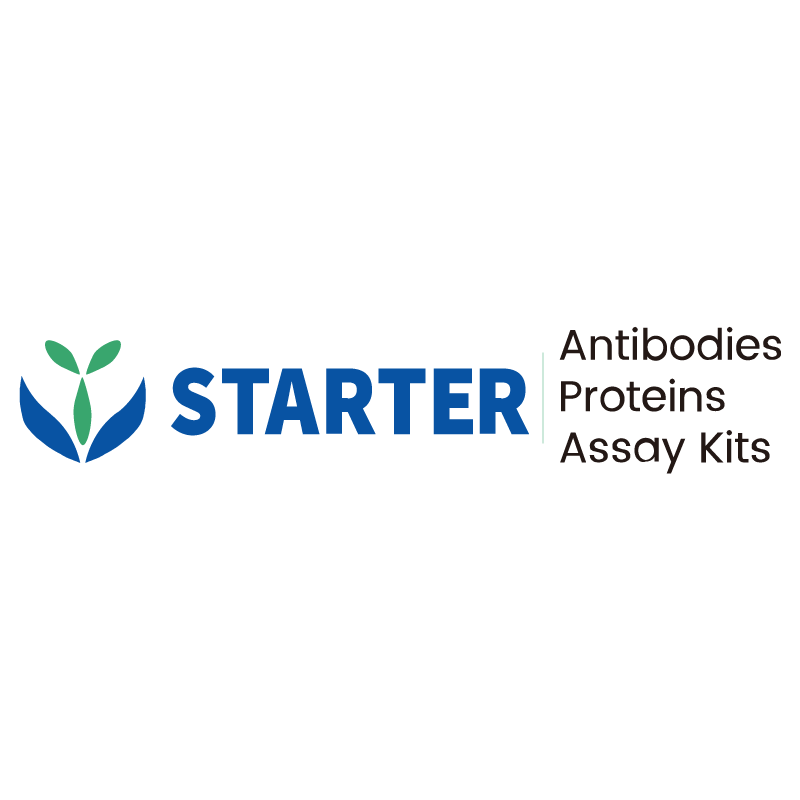WB result of HDAC1 Recombinant Rabbit mAb (HRP Conjugate)
Primary antibody: HDAC1 Recombinant Rabbit mAb (HRP Conjugate) at 1/10000 dilution
Lane 1: HeLa whole cell lysate 20 µg
Lane 2: Jurkat whole cell lysate 20 µg
Lane 3: K562 whole cell lysate 20 µg
Predicted MW: 55 kDa
Observed MW: 62 kDa
Product Details
Product Details
Product Specification
| Host | Rabbit |
| Antigen | HDAC1 |
| Synonyms | Histone deacetylase 1; HD1; Protein deacetylase HDAC1 |
| Immunogen | Synthetic Peptide |
| Location | Nucleus |
| Accession | Q13547 |
| Clone Number | SDT-310-72 |
| Antibody Type | Recombinant mAb |
| Isotype | IgG |
| Application | WB |
| Reactivity | Hu, Ms, Rt |
| Positive Sample | HeLa, Jurkat, K562, NIH/3T3, C6 |
| Predicted Reactivity | Bv |
| Purification | Protein A |
| Concentration | 1 mg/ml |
| Conjugation | HRP |
| Physical Appearance | Liquid |
| Storage Buffer | PBS, 40% Glycerol, 0.05% BSA, 0.03% Proclin 300 |
| Stability & Storage | 12 months from date of receipt / reconstitution, -20 °C as supplied. |
Dilution
| application | dilution | species |
| WB | 1:10000 | Hu, Ms, Rt |
Background
Histone deacetylase 1 (HDAC1) is a key enzyme involved in the regulation of gene expression through the deacetylation of histone and non-histone proteins. As a zinc-dependent deacetylase, HDAC1 removes acetyl groups from lysine residues on histones, thereby tightening chromatin structure and inhibiting gene transcription. It is a component of several multiprotein complexes, such as the NuRD complex, which are involved in chromatin remodeling and transcriptional repression. HDAC1 plays a crucial role in various cellular processes, including cell cycle progression, differentiation, and development. In cancer, HDAC1 is often overexpressed and contributes to tumor progression by promoting cell proliferation and survival. For example, in colorectal cancer, HDAC1 enhances cell survival and proliferation in an ATG16L-dependent manner. Additionally, HDAC1 overexpression in cancer cells can be regulated by transcription factors like Sp1 and Sp3, which bind to the HDAC1 promoter and recruit other epigenetic modulators. In neurodegenerative diseases such as Alzheimer's disease, HDAC1 has been implicated in the regulation of oxidative DNA damage repair and synaptic function. Studies have shown that HDAC1 activity may be involved in the pathogenesis of Alzheimer's disease through its effects on DNA repair mechanisms and gene expression. HDAC1 is also a potential therapeutic target for neurological disorders, as HDAC inhibitors have shown promise in preclinical studies for treating conditions like Huntington's disease and Parkinson's disease.
Picture
Picture
Western Blot
WB result of HDAC1 Recombinant Rabbit mAb (HRP Conjugate)
Primary antibody: HDAC1 Recombinant Rabbit mAb (HRP Conjugate) at 1/10000 dilution
Lane 1: NIH/3T3 whole cell lysate 20 µg
Predicted MW: 55 kDa
Observed MW: 62 kDa
WB result of HDAC1 Recombinant Rabbit mAb (HRP Conjugate)
Primary antibody: HDAC1 Recombinant Rabbit mAb (HRP Conjugate) at 1/10000 dilution
Lane 1: C6 whole cell lysate 20 µg
Predicted MW: 55 kDa
Observed MW: 62 kDa


